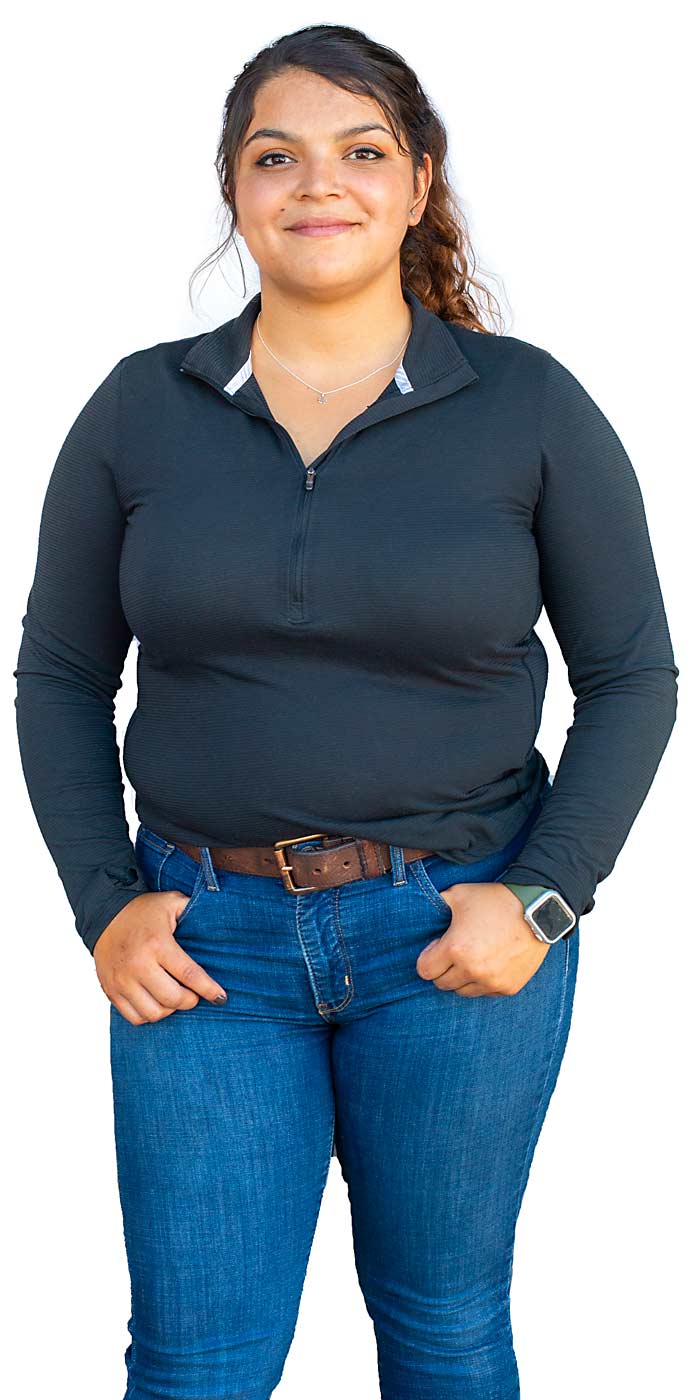family background/ Dianna graduated from Washington State University with a degree in fruit and vegetable management and works as a technical support agronomist with Stemilt Growers. She is the daughter of Claudia Hernandez and Carlos Sanchez.
age/23
grower/Chelan, Washington
crops/Apples, cherries
business/Stemilt Growers
How did you get your start?
My dad was an orchard manager and my mom worked in the warehouses. During the summers when I was a teen, I would work with each of them. I joined FFA in high school, doing apple judging, and that sparked an interest in pursuing agriculture as a career.
It was really cool learning how much work went into growing apples — from all the different insect pressures, varieties, colors and grades. There was a lot more that went into a successful crop than I could have imagined.
What did you pursue after high school?
I was pushed by my dad and my FFA advisor in high school to pursue agriculture in college. The tree fruit program at Wenatchee Valley College was a great start to broaden my scope about the different parts of the industry, postharvest research and field work.
I was also selected as one of the Washington Apple Education Foundation students and I signed up for several of their on-site career tours. Over that time, I gained perspective about the array of jobs in the industry — that it’s not just working in the field or the warehouse.
After that, I went to WSU to pursue fruit and vegetable management and I obtained an organic certificate. During my summers, I did two internships with Stemilt: the first in research and development and the second as a field intern.
What are you doing now?
As a technical support agronomist, I’m mainly tasked with managing new technology that’s being put to work in the field and to make sense of its capabilities and use it effectively. For example, we have a chemical application platform that’s relatively new, and I make sure all of the spray supervisors and managers know how to navigate the mobile applications.
I also ensure their app is up to date with all of the latest company updates, so we can use the software to its full potential.
Managing all of these devices and supporting all of these systems, combined with ensuring staff can continue to do their work effectively, can be tough some days. But all of that work is so much better than looking through a bunch of papers to find the information you need.
What happens when you get staff to buy into using technology?
One of the big advantages is you can monitor just about everything in real time. As soon as something gets sprayed and recorded, then you can sync your phone and track what’s going on in every block.
You can see the re-entry intervals and the preharvest intervals, for instance. Last year, we gradually put them out into the field, and this year everyone has got the hang of it and is trying to implement it fully.
What do you think is the next step using all of this data?
If I’m out in the field looking at apple quality and I notice something like sunburn damage, it’d be great if there was a way to look through the data long before the fruit is harvested, to better predict if and when it’ll burn.
I want to be able to understand the fruit better and prevent issues in the future. I think we could achieve this by starting with the disorder data from a warehouse’s vision systems.
With that data, you could trace an individual postharvest issue that appeared in the culls all the way back to a single block the prior season. The manager could then compare that problem to the irrigation or spray plan from the past year and make changes for the next.
Doing that could reduce a reoccurrence of common symptoms like bitter pit or split cherries from landing in the cull bin in future seasons.
What would you recommend to other young growers?
Learning statistics is really important, along with Microsoft Excel and learning its ins and outs. Learn how to use data, because it is not just a bunch of numbers.
I wish I’d have done more of that in school, because understanding data and presenting data to someone else so they can use it is crucial.
—TJ Mullinax







Leave A Comment